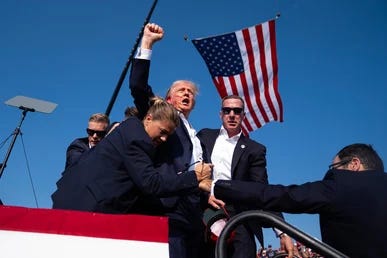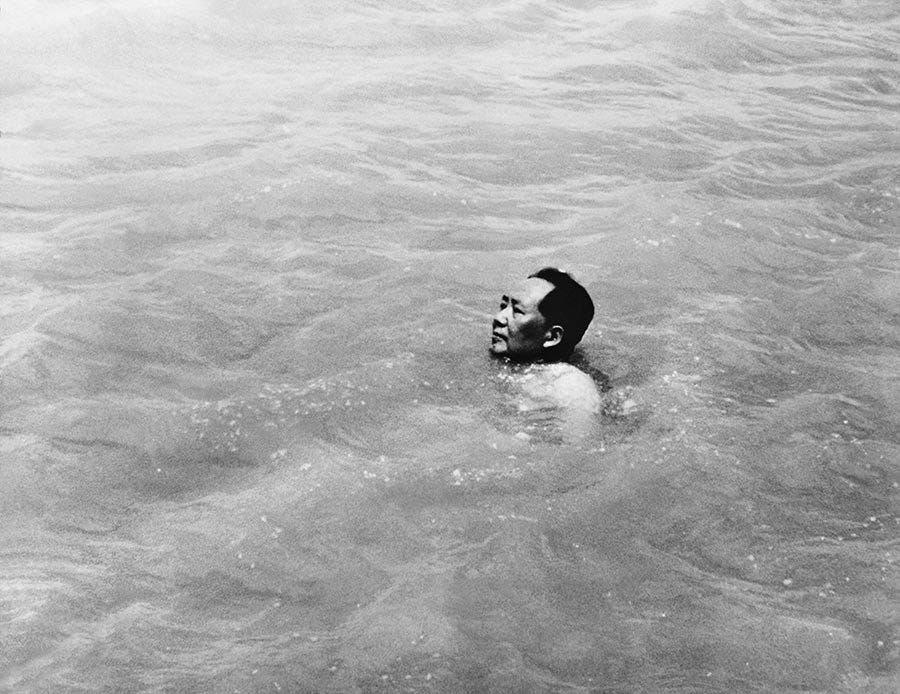In reflecting on the news this week that the Trump administration is reviewing new and upcoming Smithsonian exhibitions, I wanted to jot down a some thoughts informed my years of research into Mao-era art policy.
In periods of political upheaval and regime changes, history shows us that art is one of the key tools leveraged as a part of nation (re)building. Authoritarian political parties move away from free expression and critical thought towards creating a socio-cultural environment with one consistent and ideologically aligned viewpoint. In these efforts, images – particularly ones repeated again and again – become important components of how memories are shaped and held; on a spectrum, they move away from visual documents of history and culture towards active agents that shape the present and future.
Famously, Mao outlines the significant interrelationship between art and politics in his 1942 Yan’an Talk on Literature and Art, in which he laid the groundwork for the direction the arts should take in order to align with party values. During this talk, he stated: “The purpose of our meeting today is precisely to ensure that literature and art fit well into the whole revolutionary machine as a component part, that they operate as powerful weapons for uniting and educating the people and for attacking and destroying the enemy, and that they help the people fight the enemy with one heart and one mind.” Policies and rhetoric of this type are part of ideological work intended to (re)shape socio-cultural mythologies and lay the groundwork for policy. Not coincidentally, Mao’s speech coincided with the early part of a period called the Rectification Movement in which he was aggressively consolidating power by positioning himself as an anti-intellectual intellectual. He disparaged those who positioned themselves as intellectuals within his own party, while vehemently countered their theories with his own. We see this today with Trump’s contempt for the media, while he also craves visibility and counteracts criticism with his own social platforms and political rallies.
In thinking about overlaps between Mao and Trump, I recalled the image of Donald Trump surrounded by Secret Service agents after he was grazed by a bullet in July 2014. Blood trails down his face and a flag waves in the background as he thrusts his fist in the air in a gesture long associated with resistance. The incident occurred at a time when Trump’s position was politically tenuous. On top of losing the 2020 election and a failed insurrection, he had also been convicted on 34 felony counts. By the 2024 election race, he was down, but somehow not out. The photo of Trump after the shooting visually positioned him as a hero fighting through circumstances to emerge invincible and triumphant. The emotionally-charged Trump photograph was immediately recognised for its potential propagandistic potential.
Compositionally, the image has been compared to Eugene Delacroix’s Liberty Leading the People or the photograph Raising the Flag on Iwo Jima – the former standing as a symbol of revolution and the latter as an embodiment of a hard-fought triumph of good. Ideologically, however, the image is more akin to a 1956 photograph of Mao swimming in the Yangtze River. At the time of the swim, Mao was in a period of political decline after word got out about a secret speech Nikita Khrushchev delivered acknowledging Stalin’s flaws and the dangers of cults of personality. With Mao representing an equivalent figure in China and with the newly established PRC still taking queues from the Soviet Union at the time, this news placed Mao in a vulnerable position where the party pulled back on centring his political theories and ceased activities that might promote a Mao Cult. In visual art, this played out as an halt to the production of Mao paintings or posters in the year that followed – in my research, 1957 is one of only two years where this happens (the other is 1962), with both occurring during fraught political periods for Mao.
This 1956 swim, represents a moment where Mao leveraged his body and image to do a performative action with ideological significance. The waves were choppy on this day and Mao chose to swim against the advice of his bodyguards. Since he had been a keen swimmer from a young age, the stunt provided him with the opportunity to lean on his skills to metaphorically assert his strength in other areas. His photographer Hou Bo was on hand to capture the incident, and the reproduction of the image in Chinese and international press magnified its impact. Leaving no room for confusion as to its ideological significance, Mao stated of the swim: “People say that the Yangtze is a very big river. Actually, there is nothing to be afraid of about its size. Isn't United States imperialism very big? It turned out to be nothing when we rebuffed it once. So, there are actually some big things in this world that are not to be feared.”1 Through this act and the resulting photograph, Mao positioned himself as the body politic of China, embodying entities and ideologies greater than himself and tying himself to the nation. Trump’s July 2024 photograph functions similarly to show him as a representation of one side of a political struggle and works to position him as the lone figure to lead that fight, narrowly escaping martyrdom.
As Mao regained his hold in the party in the later half of the 1950s and into the 1960s, he pushed his Great Leap Forward initiative. This is often reflected on as a disastrous five-year plan intended to rapidly advance agriculture and industry, but it also impacted the arts. There were massive targets tied to producing paintings, posters, poetry, and more. There was also a significant effort to review and re/open museums, including the Chinese People’s Revolutionary Military Museum and the Museum of the Chinese Revolution. The party understood that art has the power to shape the way people view and understand the world and set to work commissioning paintings that embodied the stories that matched their political agenda. For images of Mao specifically, he worked via his secretaries and underlings to insert his theories and presence – referred to as the Red Line of Mao Thought – throughout these institutions as a means of shoring up his own power and status.
This takes us back to where I began this text, with the Trump administration’s involvement in the Smithsonian Institution’s activities. Broadly speaking, museums represent authoritative voices in society that preserve objects and histories that have are deemed to be true and significant. Curators, historians, archivists, and other professionals collaborate to preserve and deserve this understanding of these institutions’ functionality. This is why as societies change, we find that museums (and other sites for art, such as spaces with public statues) are often at the centre of important discussions for how and why we want to make collective adjustments. In recent years, we have seen this with decolonisation work to present more nuanced historical perspectives and with the removal of monuments to harmful historical figures in public spaces. In the eight months that Trump has been in office, his administration has worked to roll back changes on both of these fronts – the attack on Smithsonian exhibitions, the forced resignation of the head of the National Portrait Gallery Kim Sajet, Trump taking over the Kennedy Centre, and the reinstallation of Confederate statues are indications that Trump has an aggressive agenda for the arts. But Trump does not look forward – he refers to an unspecified period in the past when things were “great.” What he seems to be carrying out is a Great Leap Backwards, filled with a promise to return to a time of high agricultural and industrial production in the US that is unlikely to return, and he is topping that off with moves towards increased social inequalities and stifled cultural output.
Please forgive any typos or rambling – I really did write this on the fly.
“Chairman Mao Swims the Yangtse,” Peking Review 9, no. 31 (July 29, 1966): 4.




